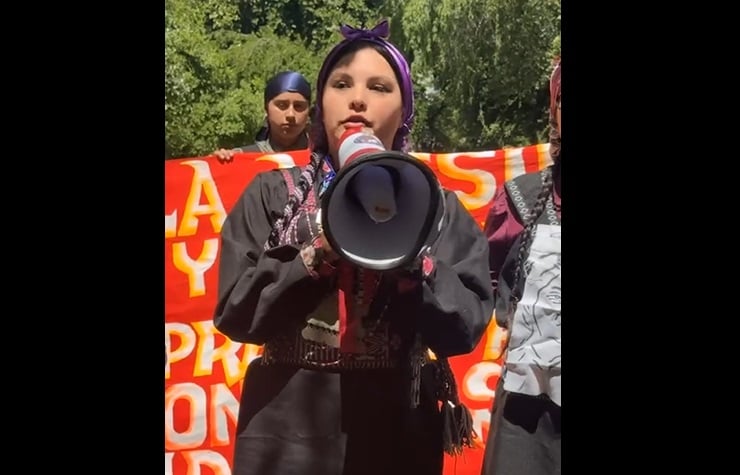Province gives $9.2 million to groups trying to prevent gender-based violence – CBC

Government of New Brunswick Boosts Funding for Gender-Based Violence Prevention, Aligning with Key Sustainable Development Goals
Executive Summary
The Government of New Brunswick has announced a significant financial commitment to combat gender-based violence, allocating an additional $9.2 million to related programs and services. This investment brings the total budget for women’s equality to $23.6 million for the 2025-26 fiscal year. The initiative directly supports the achievement of several United Nations Sustainable Development Goals (SDGs), most notably SDG 5 (Gender Equality), by enhancing the safety, well-being, and empowerment of women and gender-diverse individuals across the province.
Alignment with Sustainable Development Goal 5: Gender Equality
This funding initiative is a direct measure to advance SDG 5, which aims to achieve gender equality and empower all women and girls. The investment specifically targets the elimination of all forms of violence against women and girls in the public and private spheres (Target 5.2).
- The funding will improve the reach, quality, and accessibility of essential services for survivors of violence.
- It strengthens the capacity of organizations working to create a safe environment where women can thrive, free from fear and violence.
- The government’s cross-departmental approach underscores a systemic commitment to making New Brunswick safe for all residents, a core tenet of gender equality.
Detailed Funding Allocation and Programmatic Impact
The $9.2 million is allocated to enhance direct support systems, prevention efforts, and educational outreach. This strategic distribution ensures a multi-faceted approach to addressing gender-based violence, contributing to SDG 11 (Sustainable Cities and Communities) by providing safe housing and SDG 3 (Good Health and Well-being) by supporting survivors.
- $6.1 Million to Crossroads for Women: This funding is critical for providing secure housing, a key component of community safety and resilience.
- $4.6 Million for the transition house program, offering emergency shelter.
- $1.5 Million for the second-stage housing program, providing longer-term support.
- $2.1 Million for Gender-Based Violence Outreach: This allocation focuses on proactive measures, including prevention, education, and support services, aligning with SDG 4 (Quality Education) through public awareness campaigns.
- $800,000 for Sexual Violence Services: This funding will improve access to specialized, community-based support for survivors of sexual violence across the province.
According to organizational leaders, this investment allows a strategic shift from fundraising for operational costs to focusing on survivor needs, thereby strengthening institutional capacity as outlined in SDG 16 (Peace, Justice and Strong Institutions).
Broader Contributions to the 2030 Agenda
The initiative represents a comprehensive effort that intersects with multiple SDGs, demonstrating a holistic approach to sustainable development.
- SDG 10 (Reduced Inequalities): By addressing violence that disproportionately affects women and gender-diverse people, the initiative works to reduce systemic inequalities.
- SDG 16 (Peace, Justice and Strong Institutions): The funding strengthens community organizations that are crucial for building a peaceful and just society and protecting vulnerable populations from violence.
- SDG 17 (Partnerships for the Goals): The government’s collaboration with organizations like Crossroads for Women and the Courage Centre exemplifies the effective public-civil society partnerships needed to achieve the SDGs.
Conclusion
The New Brunswick government’s $9.2 million investment is a significant step toward eradicating gender-based violence. While acknowledged as an initial step with more work to be done, it provides critical stability to front-line organizations and reinforces the province’s commitment to the 2030 Agenda for Sustainable Development. The funding directly supports the creation of safer, more equitable, and healthier communities for all residents.
SDGs Addressed or Connected to the Issues Highlighted in the Article
-
SDG 5: Gender Equality
The article’s central theme is the New Brunswick government’s financial commitment to combat gender-based violence. This directly aligns with SDG 5, which aims to achieve gender equality and empower all women and girls. The funding is specifically targeted at organizations helping “women and gender-diverse people” who are survivors of intimate partner violence and sexual assault, reinforcing the goal of creating a society where women can “thrive” without fear.
-
SDG 11: Sustainable Cities and Communities
The article discusses the allocation of funds for housing solutions for women fleeing violence. This connects to SDG 11, particularly its goal of making human settlements safe and sustainable. By funding “emergency shelter” and “second-stage housing,” the initiative addresses the need for safe and accessible housing for a vulnerable segment of the population, which is a key component of a sustainable community.
-
SDG 16: Peace, Justice and Strong Institutions
This goal is relevant as the article addresses the reduction of violence and the strengthening of support systems. The funding is described as a response to domestic violence being an “epidemic” and aims to “make sure that all the people in New Brunswick feel safe.” This effort to reduce violence and improve access to essential support services contributes to building a more peaceful and just society.
Specific Targets Identified Based on the Article’s Content
-
Target 5.2: Eliminate all forms of violence against all women and girls in the public and private spheres, including trafficking and sexual and other types of exploitation.
The article directly addresses this target. The $9.2 million in funding is explicitly for “efforts to prevent gender-based violence.” It supports organizations that provide “emergency shelter and support to women fleeing violence,” “community-based sexual violence services,” and “prevention, education and support services to victims of violence.” The minister, a survivor of intimate partner violence herself, emphasizes the goal is to ensure women “should not live in fear or live with violence.”
-
Target 11.1: By 2030, ensure access for all to adequate, safe and affordable housing and basic services.
This target is identifiable through the specific allocation of funds for housing. The article states that the funding includes “$4.6 million for Crossroads for Women’s transition house program, which offers emergency shelter” and “$1.5 million for Crossroads’ second-stage housing program, which offers longer-term housing.” This demonstrates a direct effort to provide safe housing for women and their families escaping violent situations.
-
Target 16.1: Significantly reduce all forms of violence and related death rates everywhere.
The article highlights the severity of the issue, with one advocate stating that “domestic violence is an epidemic and that we need to do something about it or lives will be lost.” The government’s investment is framed as a crucial step to address this violence, with the ultimate goal of making such funding “unnecessary someday because there wouldn’t be a need.” This aligns with the broader objective of reducing all forms of violence within the community.
Indicators Mentioned or Implied in the Article
-
Government financial commitments
The article provides specific monetary values that serve as clear indicators of government action. These include the “additional $9.2 million” investment, the “total of $23.6 million for the 2025-26 fiscal year” for women’s equality, and the specific allocations of “$4.6 million” for transition houses, “$1.5 million” for second-stage housing, “$2.1 million” for outreach, and “$800,000” for sexual violence services. These figures can be used to track and measure the financial commitment to the identified targets.
-
Capacity and accessibility of support services and shelters
The article implies several indicators related to service capacity. It mentions that “Crossroads currently has 41 beds,” which is a specific measure of shelter capacity. A critical indicator of unmet need is also provided: the organization “is still forced to turn women away.” Progress could be measured by tracking the increase in the number of shelter beds and a decrease in the number of individuals turned away. The funding’s goal to “improve the reach, quality, and accessibility of essential services” also points to service accessibility as a key metric.
-
Demand for and utilization of support services
The article points to the high demand for services as an indicator of the problem’s scale. It notes the “growing demands for support” and that one center, the Courage Centre, has “helped more than 4,000 women.” Tracking the number of women and gender-diverse people seeking and receiving help from these funded organizations can serve as an indicator to measure the reach of these programs and the ongoing need for them.
Table of SDGs, Targets, and Indicators
| SDGs | Targets | Indicators Identified in the Article |
|---|---|---|
| SDG 5: Gender Equality | Target 5.2: Eliminate all forms of violence against all women and girls. |
|
| SDG 11: Sustainable Cities and Communities | Target 11.1: Ensure access for all to adequate, safe and affordable housing and basic services. |
|
| SDG 16: Peace, Justice and Strong Institutions | Target 16.1: Significantly reduce all forms of violence. |
|
Source: cbc.ca

What is Your Reaction?
 Like
0
Like
0
 Dislike
0
Dislike
0
 Love
0
Love
0
 Funny
0
Funny
0
 Angry
0
Angry
0
 Sad
0
Sad
0
 Wow
0
Wow
0














































































